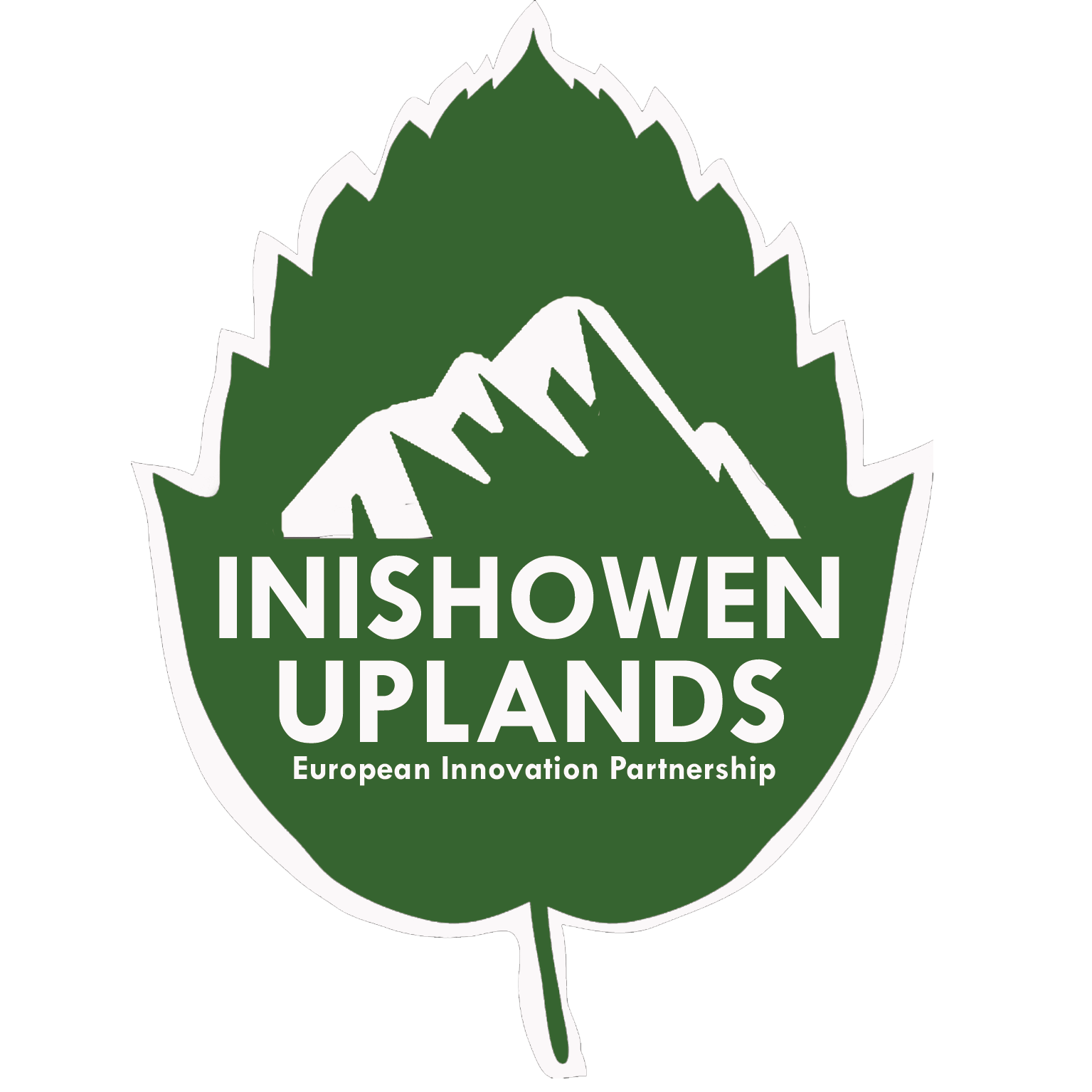Virtual fencing in the Inishowen Uplands
The Inishowen Uplands EIP are currently trailing NoFence collars on upland farms in Inishowen. The collars have been used on farms over the winter to allow grazing of commonages which have become overgrown and no longer manageable with current sheep numbers.
Training pasture setup with cattle being closed of from one 10m end of a field.
Before fitting collars to the animals a manageable field was chosen as a training pasture, a low laying field with a secure boundary close to the yard was chosen for ease of management. The animals were fitted with the collars and assigned to the selected field with one end blocked off with the virtual fence. This was to ensure they only have access to a straight line fence with no corners or angles that may confuse the animal whilst in training. The training on this farm was difficult as this area has a poor mobile signal, which can cause a delay in the collar being assigned to the virtual fence and a delay in the farmer getting notifications from the collar.
When assigned the Cattle quickly associated the music with the fence and possible shock and they would turn upon hearing the music.
After a week of training and with evidence the cattle were turning at the music the Cattle were put in the commonage with a large pasture laid out. Cattle were given free roam so we could judge their behaviour. The Native Irish Dexter cattle are well suited to these environments and this farmer has kept these cattle in the commonage over winter to improve the habitat as it had become overgrown with Molina grasses and woody heathers.
Heavy dense heather that the cattle will be tasked with breaking up.
This grazing aims to improve the grazing quality of the area whilst also improving the score for this commonage in the coming year under the ACRES scheme increasing the payments for the farmers while also improving the overall quality of the landscape for breeding wader bird species that require different sward heights for feeding and nesting habitats. The Collars also allow this farmer to limit damage as he can use up to 9 exclusion zones within the set area ensuring safety of the animals and the habitat.
The farmer is very happy with the collars and has eased his workload as he currently works off farm and can check up on his cattle anytime of the day. Even using the collars to locate cows that may have left the herd to calf so that the farmer can check on the welfare of the herd.
The cattle and the commonage will be assessed over the season to ensure the cattle are thriving and the quality of the habitat is improving.
Areas where the cattle have gone close to the virtual boundary following mostly roadways through the commonage
The overall positions for the cattle over a week period. The red area in the centre is a “rushy” area which provides shelter and a dry place for the cattle to lay
Current cattle positions with white indictors for recent areas and orange for missed reports






